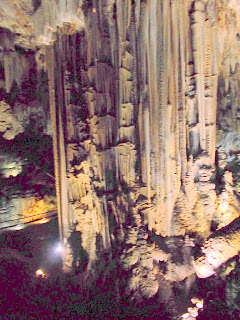Freya's Garden
четверг, 28 ноября 2013 г.
понедельник, 18 ноября 2013 г.
Help me! They killed my mother.
It is time that the other world countries start placing sanctions and pressure on South Africa to put a stop to the poaching of Rhino's. Just recently 8 rhino's in the Kruger National Park in South Africa were found killed withing 24 hours. These figures are disguisting. As a South African, I am heartbroken and disappointed at the lack of moral standard the South African Government shows today to our beautiful creatures of our land. If we can get other countires governments to stand with us to put an end to this then the rhino might just have a fighting chance of survival.
I am fortunate enough to have seen and witnessed these charasmatic mega-herbivores in their natural habitat and I for one will fight as hard as I can to ensure that the generations after us will get the same magnificent priviledge that I have had. It is our moral duty and responsibility as human beings to protect all living creatures on our planet.
Here are ten good reasons to save the rhino!
1. Rhinos are critically endangered
At the turn of the 19th century, there were approximately one million rhinos. In 1970, there were around 70,000. Today, there are fewer than 24,500 rhinos surviving in the wild and this number is decreasing daily.
Three of the five species of rhino are “Critically Endangered” as defined by the IUCN (World Conservation Union). A taxon is classified as critically endangered when the best available evidence indicates that it meets any of a range of pre-determined criteria. It is therefore considered to be facing an extremely high risk of extinction in the wild. The southern subspecies of the white rhino is classified by the IUCN in the lesser category of being “Near Threatened”; and the Indian rhino is classified as "Vulnerable"even this is considered to be facing a high risk of extinction in the wild.
In 2005, some of us are lucky enough to be able to travel to Africa and Asia to see them in the wild. In 2035, when our children and grandchildren have grown up, will they still be able to see wild rhinos?
2. Rhinos have been around for 50 million years
Rhinos have been an important part of a wide range of ecosystems for millions of years; we must not let them join the dodo in extinction.
3. Humans have caused the drastic decline in numbers
Poachers kill rhinos for the price they can get for the horns (used for traditional Chinese medicine and for ornamental dagger handles in Yemen); land encroachment, illegal logging and pollution are destroying their habitat; and political conflicts adversely affect conservation programmes.
4. Rhinos are an umbrella species
When protecting and managing a rhino population, rangers and scientists take in account all the other species interacting with rhinos and those sharing the same habitat. When rhinos are protected, many other species are too; not only mammals but also birds, reptiles, fish and insects as well as plants.
5. Rhinos are charismatic mega-herbivores!
By focusing on a well-known animal such as a rhino (or, to use the jargon, a charismatic mega-herbivore), we can raise more money and consequently support more conservation programmes benefiting animal and plant species sharing their habitat.
6. Rhinos attract visitors and tourists
Rhinos are the second-biggest living land mammals after the elephants. Together with lion, giraffe, chimpanzee and polar bear, the rhino is one of the most popular species with zoo visitors. In the wild, rhinos attract tourists who bring money to national parks and local communities. They are one of the “Big Five”, along with lion, leopard, elephant and buffalo.
7. In situ conservation programmes need our help
Protecting and managing a rhino population is a real challenge that costs energy and money. Rhino-range countries need our financial support, and benefit from shared expertise and exchange of ideas.
8. Money funds effective conservation programmes that save rhinos
We know that conservation efforts save species. The Southern white rhino would not exist today if it were not for the work of a few determined people, who brought together the 200 or so individuals surviving, for a managed breeding and re-introduction programme. Today, there are some 17,500 Southern white rhinos.
With more money, we can support more programmes, and not just save rhino populations, but increase numbers and develop populations. The Northern white rhino subspecies may just have become extinct, but it is not too late to save the rest.
9. Many people don’t know that rhinos are critically endangered
Not just that, but how many people know that rhinos also live in Asia? Or that two species have just one horn? Or that the horn is not used as an aphrodisiac? We have even heard some people say that they are carnivores!
If people do not know about these amazing animals and the problems they are facing, how can we expect them to want to do something to help save rhinos?
10. We all have an opportunity to get involved!
You can help us raise awareness of the plight of the rhino! The more we do all together, the more people will learn about rhinos and the more field projects we will be able to support.
it is time we all stand together and put a stop to such a criminal act on one of the most magnificent creatures of our planet!
To:
South African Government
South African Government
I just signed the following petition addressed to: South African Government.
----------------
Put a stop the poaching of Rhino's in South Africa
It is time that the other world countries start placing sanctions and pressure on South Africa to put a stop to the poaching of Rhino's becasue God knows that they are not doing anything about it. Just recently 8 rhino's in the Kruger National Park in...
----------------
Put a stop the poaching of Rhino's in South Africa
It is time that the other world countries start placing sanctions and pressure on South Africa to put a stop to the poaching of Rhino's becasue God knows that they are not doing anything about it. Just recently 8 rhino's in the Kruger National Park in...
суббота, 16 ноября 2013 г.
среда, 16 октября 2013 г.
вторник, 15 октября 2013 г.
понедельник, 30 сентября 2013 г.
воскресенье, 29 сентября 2013 г.
Подписаться на:
Комментарии (Atom)






































